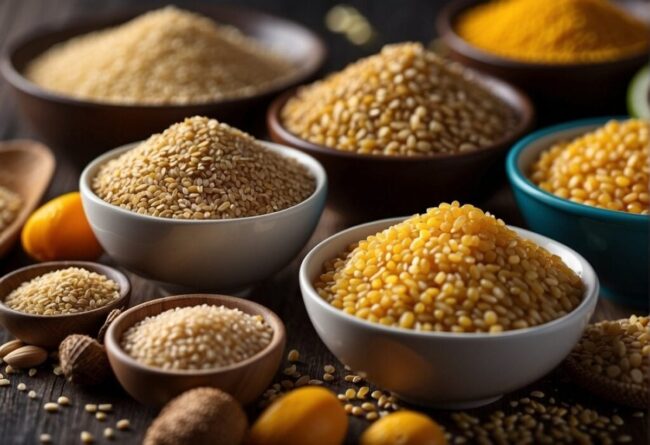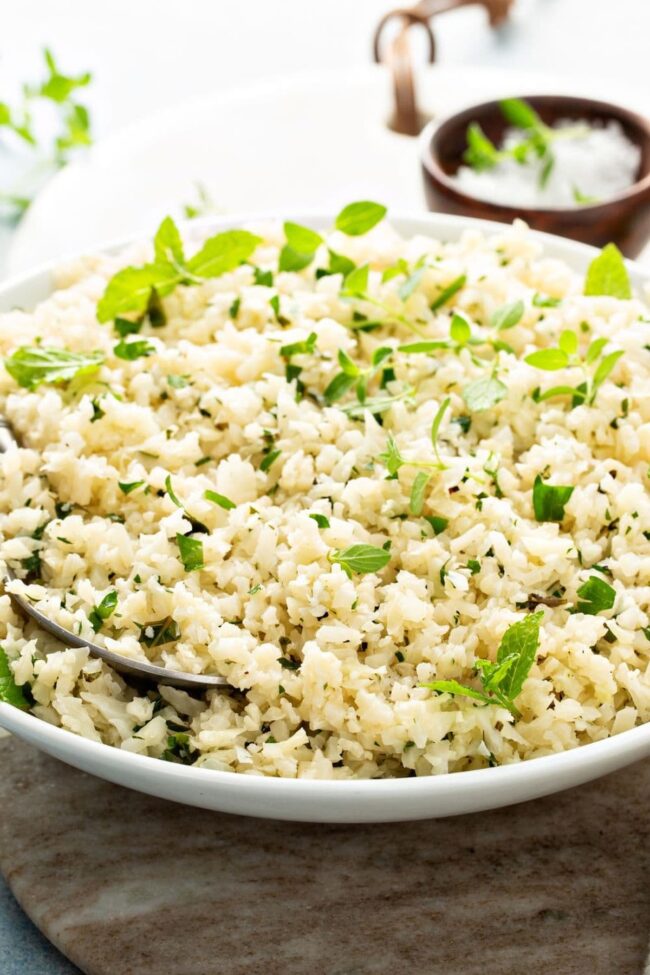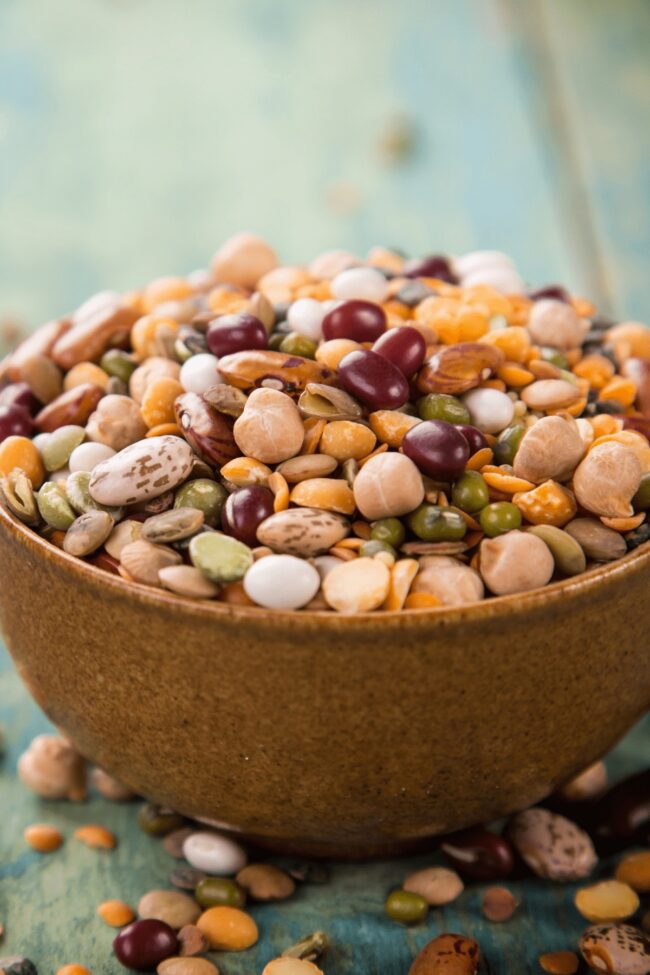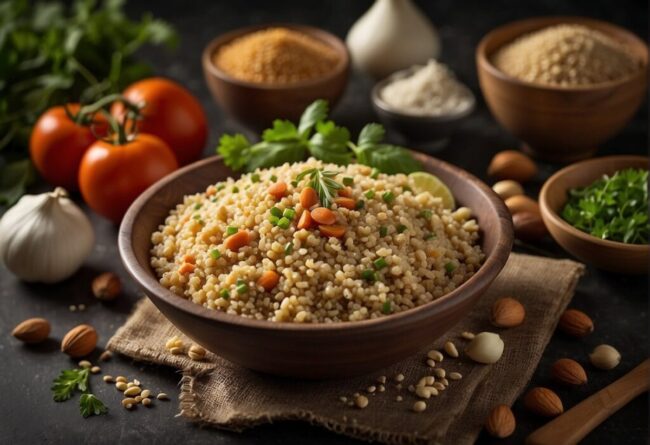5 Simple Quinoa Swaps You Should Try
Quinoa substitutes bring hearty, nutritious grains to your table when this protein-packed seed isn’t at hand.
An assortment of wholesome alternatives mirrors the light, fluffy texture and delicate nuttiness expected in modern dishes.
Salads, bowls, and sides remain satisfying with a balance of nourishment and texture.
Every spoonful fuels both body and spirit with gratifying simplicity.
Quinoa: What You Need to Know
Quinoa is a nutrient-rich grain known for its high protein and fiber content. It is a versatile ingredient that works well in salads, soups, and breakfast bowls.
Quinoa Nutrition Facts
Quinoa stands out as a powerhouse of nutrition, packed with essential nutrients your body craves.
With all nine amino acids present, it ensures you receive complete protein in every bite.
One cup of this superfood not only provides 8 grams of protein but also delivers 5 grams of fiber, promoting fullness and digestive health.
Rich in iron and magnesium, quinoa supports energy production and muscle function effectively.
The presence of B-vitamins and antioxidants further enhances its health benefits by protecting cells from damage while supporting various bodily functions.
Types of Quinoa
Quinoa is a remarkable grain with a variety of types, each boasting its own distinct taste and characteristics.
White quinoa stands out for its mild flavor and fluffy texture, making it a go-to option for countless recipes.
Red quinoa offers an appealing nuttiness and retains its shape beautifully after cooking, perfect for salads or grain bowls that need added texture.
Black quinoa brings an earthy crunch to dishes, enhancing everything from soups to salads with depth and character.
These three varieties not only differ in flavor but also provide essential nutrients that support overall health in delicious ways.
Best Grain-Based Alternatives to Try
Quinoa is celebrated for its nutritional benefits, but exploring grain-based substitutes can introduce exciting textures and flavors to your meals. These alternatives, ranging from ancient grains to modern options, offer versatile ways to diversify your diet while maintaining a wholesome, nutritious foundation.
Types of Rice
Brown rice stands out with its chewy texture and nutty taste, offering a wholesome option for various meals.
This whole grain packs a fiber-rich punch, making it an excellent choice for those seeking nutritious alternatives.
White rice provides convenience in the kitchen with its quick cooking time and fluffy consistency, perfect for dishes that require a lighter touch.
Wild rice introduces an earthy flavor profile along with its hearty texture, elevating any dish beyond ordinary grains.
Each of these options enhances culinary creativity while catering to different tastes and preferences in your kitchen routine.
Couscous and Its Similarities
Couscous is a versatile ingredient that can elevate any meal with its light texture and mild flavor.
Quick cooking time makes it a go-to choice for busy days, seamlessly fitting into salads or serving as an excellent base for hearty stews.
Pearl couscous offers a delightful twist with its larger grains and chewy consistency, adding depth to dishes like pilafs or grain bowls.
Its unique shape captures dressings beautifully, ensuring every bite is flavorful.
Discovering new ways to incorporate couscous into your meals can turn simple recipes into culinary adventures that surprise your taste buds.
More Whole Grains
Barley brings a rich, nutty flavor that enhances the heartiness of soups and stews.
This grain's unique pasta-like texture adds depth to various recipes, making it an excellent choice for those looking to elevate their meals.
Millet stands out with its small, round shape and mild sweetness; it cooks quickly, adding a lightness that brightens up any dish.
Sorghum offers incredible versatility as a gluten-free option; whether popped or cooked into porridge, this grain can easily fit into your daily diet alongside other favorites like quinoa.
Ancient grains such as amaranth and teff provide nutrient-packed alternatives worth exploring in your culinary adventures.
Non-Grain Substitutes
Non-grain substitutes for quinoa provide innovative alternatives that cater to diverse dietary preferences and nutritional needs. These options can range from legumes to seeds and other nutrient-rich ingredients.
Vegetable-Based Alternatives
Cauliflower rice offers a delightful twist to traditional grain options, serving as a fantastic alternative for those looking to cut calories and carbs.
This versatile ingredient mimics the texture of quinoa beautifully when cooked, providing an excellent base for countless meals.
Preparing it is straightforward; just pulse florets in a food processor and sauté until tender for a quick side dish or main component.
Broccoli rice takes this idea further with its earthy flavor and impressive nutrient profile, making it another great substitute that adds fiber to your diet.
Both options shine in their ability to adapt seamlessly into various recipes while keeping meals light and nutritious.
Legumes
Chickpeas serve as a robust alternative to quinoa, packed with protein and a delightful nuttiness.
Whole or mashed, these legumes enhance dishes in unexpected ways.
Lentils provide an interesting texture that mirrors quinoa's appeal while absorbing flavors beautifully.
Different varieties of lentils offer unique tastes, allowing for customization based on personal preference or recipe requirements.
Incorporating these options opens up new avenues for creativity in your meals without relying solely on grains.
Special Dietary Considerations for Quinoa
Quinoa is naturally gluten-free, making it a great option for those with dietary restrictions. It provides essential amino acids, making it a complete protein source.
Gluten-Free Low-Carb Choices
Finding alternatives to quinoa that fit a low-carb and gluten-free diet can be exciting.
Amaranth stands out with its ancient roots and impressive protein content, making it a nourishing choice.
This grain not only caters to those avoiding gluten but also delivers a decent amount of fiber, enhancing any dish’s nutritional profile.
Buckwheat surprises many with its name; despite the "wheat" in it, this option is entirely free from gluten and brings forth a delightful nuttiness similar to quinoa.
Packed with high fiber yet low in calories, buckwheat serves as an excellent substitute for anyone seeking healthier meal options without sacrificing flavor or texture.
Other Food Replacement Factors
Choosing the right grain involves more than just checking gluten levels and carbohydrate amounts.
Calories play a crucial role; teff offers a low-calorie option while packing in fiber, making it an excellent choice for those watching their intake.
Fiber content is another important aspect, with buckwheat leading the way in providing digestive benefits thanks to its impressive fiber profile.
Flavor and texture should also guide your selection; finding an alternative that blends seamlessly into your favorite dishes can elevate the entire meal experience.
Balancing health needs with taste can lead to discovering new favorites that suit both dietary requirements and culinary preferences.




